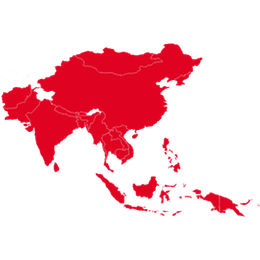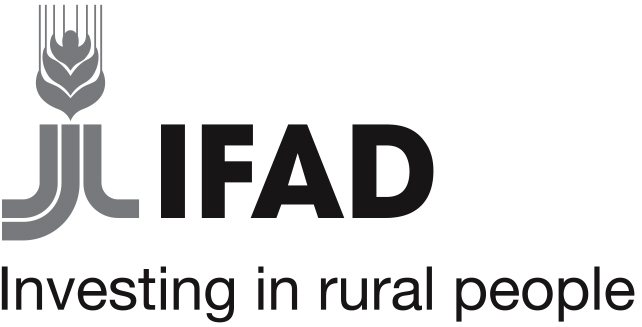Community-driven development improves livelihoods in Tonga
"Beneficiaries developed collective plans that prioritized their development needs."
BACKGROUND
In rural Tonga, many people lack the skills to manage finances and social cohesion is low. Aid dependence and poor representation mean many are vulnerable. Through a community-driven development (CDD) process, rural people were mobilized into collectives and empowered to grasp the opportunities available to them.
WHAT’S INVOLVED
Addressing systemic inequality
In Tonga, poverty is widespread and a lack of infrastructure and representation at a policy level mean that rural communities lack the resilience to bounce back from events such as natural disasters. Aid dependency is also an issue.
Developing collective capability
Working together as community organizations, beneficiaries developed collective plans that prioritized their development needs and helped them identify and use sources of support.
EXPLORE THIS SOLUTION
The CDD project can offer
- A successful model for community-driven development in rural areas lacking infrastructure and policy support

Countries involved
Tonga
Project dates
2012 - 2017
Share this solution
Bookmark this solution
BookmarkShow Full Solution
Summary
A community-driven approach (CDD) was adopted to help redress poverty in small and remote communities in Tonga. By forming community-based organizations (CBOs), they were empowered to take collective action. They collectively prepared Community Development Plans (CDP) that prioritize actions to take, and then put them into effect. The project clearly demonstrated the merits of inclusive planning in mobilizing community efforts towards concrete ends, helping to improve lives and build towards a better development infrastructure.
Challenge
People in many remote rural places in Tonga face worsening hardship as a result of aid dependence and the failure of government and other service providers to address their social and economic needs. This is combined with the breakdown of structures that traditionally provided ‘safety nets’ for the vulnerable. With the loss of social cohesion, the resilience of many communities to setbacks such as natural disasters has been weakened. Their voices are not heard in the capital city and they are largely excluded from official policy formulation processes, receiving an inequitable share of government development resources. The key challenge was how to reverse this trend and build cohesive community-based organizations to help members take advantage of available services and increase their incomes.
Solution
The solution was to adopt a community-driven development approach, designed to help villagers to implement and promote collective actions and empower them to have a voice in decisions that affect their lives. After mobilizing villagers into community-based organizations, the programme helped them generate Community Development Plans (CDP) in an all-inclusive collaborative manner. The CDPs were based on their own development priorities and the requirement to obtain support/assistance to improve their livelihoods. The planning process developed by the programme ranked and prioritized the development challenges faced by group members (men, women and youth), and evolved them into consensus-driven priorities in a CDP. Implementing the plans was the last step in the process.
Over time, the community development plans were progressively revised, and the first-order priorities were implemented with the aid of Community Economic Infrastructure Grants (CEIGs). The CDPs have also proven to be an effective mechanism for creating linkages with other development partners and private sector investors, with the objective of leveraging non-Tonga Rural Innovation Project (TRIP) contributions to fund identified priorities.
Additionally, a total of 161 sub-projects focusing on community economic infrastructure development activities were implemented (compared with a target of 60). The main sub-projects chosen through the CDP process were:
community infrastructure (mainly halls/evacuation centers built to category 5 cyclone standards);
agricultural infrastructure comprising of agriculture boundary fences, agriculture sheds, nurseries and tractor sheds (19 per cent);
water infrastructure comprising boreholes; pumps; pump sheds, water tanks and stands (18 per cent);
fencing (14 per cent);
commercial infrastructure (11 per cent); and
agricultural machinery (7 per cent).
The remaining sub-projects are spread across transport, environment, tourism, and education infrastructure.
Results
A total of 151 communities (about 11,270 beneficiaries) completed the preparation of CDPs. Adoption of the CDPs demonstrates that inclusive planning is a powerful process that can mobilize community efforts and have an impact on national planning processes. The community-driven development approach and the CDP planning process were uniquely successful in empowering remote and poor communities, constructing a range of communal infrastructure, and bringing tangible benefits to the communities.
Institution-building was a great achievement, since it helped with:
embedding the CDD planning process in the Ministry of Internal Affairs (MIA) which is in charge of rural development in Tonga;
building the capacity of MIA’s town and district officers to work with their constituents to prepare community development plans; and
assisting communities to implement priority development economic infrastructure activities which reflect the wishes of women, men and youth.
It also enhanced capacity for planning, and recognition of the importance of self-reliance and sustainability. As an indication of the effectiveness of the planning process, beneficiary contributions exceeded the 12 per cent cash and 13 per cent in-kind minimum established in the design report.
The sub-projects implemented under the program also had a significant impact on the beneficiaries and decisively demonstrated the potential of proper planning and organization to deliver concrete outputs, as well as having a direct economic impact.
Lessons learned and potential for replication
In terms of innovation and learning, the process demonstrated:
how the inclusive approach to the CDP process could be effectively tested, developed and then embedded into the Ministry of Internal Affairs’ (MIA) Kingdom-wide planning process;
how CDP can strengthen community engagement, empowerment, resilience and self-help ability; and
how the process could lead to more practical and agriculture-focussed innovation in terms of changed practices, increased food production and higher rural incomes.
Also noteworthy is the substantial contribution to the institutionalization of the CDP process into MIA, and engagement with and support for MIA’s core field-level staff.
A few key lessons that merit special attention have emerged from the activities:
The project required that in return for support with economic infrastructure, all households in target communities plant an agreed number of commercial crop plants (such as kava, vanilla and citrus) and tree crops such as sandalwood. This combination of reward/incentive and conditionality for the former is understood and complied with by most target communities, and represents a good move towards community independence.
Capacity-building under the project was mainly focused on the planning method as well as the administration of sub-projects. In most communities there is limited financial literacy. Longer-term strategic economic planning would maximise the impact and sustainability of the sub-project investments.
The CDP process is particularly challenging in large communities due to inevitable logistical constraints of processing large numbers and divergent interests through a consensus-building methodology.
The traditional dominance of men in community decision-making structures is a barrier to gender inclusion. Although women have been equal participants in the CDP process, they have not been equal decision-makers and are in fact hardly represented in leadership positions.
Improved understanding of the costs, benefits, risks and returns of investments in sub-projects is important if beneficiaries are to assume accountability and ownership.
Community planning capacity is still variable and most communities need follow-up support with planning and administration.
The culture of dependency on external assistance is still evident.
Finally, attention to M&E from the outset would enhance the potential for evaluation.
Next steps
A number of initiatives piloted under the project were ready for wider application as the project moved to the next phase. These include:
a Farmer Field School (FFS) programme for structured farmer learning and training
a microcredit project to enable farmers to buy improved farming tools
a one-acre demonstration of improved and more sustainable farming practices and
training and capacity-building programmes for target communities on a wide range of relevant topics such as handicraft marketing, nursery operations/ management, etc.
Solution Video
Last update: 30/09/2019

